Integrative Lighting in Classrooms: Preliminary Results from Simulations and Field Measurements
Abstract
:1. Introduction
- (a)
- To verify if the circadian values (melanopic equivalent daylight illuminance m-EDI) calculated or measured in the classrooms could satisfy the recommendations reported in recent literature, for instance, in the WELL protocol.
- (b)
- To assess the influence on integrative lighting (photopic and melanopic illuminances) played by electric lighting, as a function of different types of lighting systems and daylighting, as a function of different room orientation and sky conditions.
2. Case Study
3. Materials and Methods
3.1. Daylighting
- 21 December, 8:30 through 16:30, with a time interval of 1 h
- 21 March, the same range as for 21 December
- 21 June, 07:30 through 15:30 (time interval: 1 h), with a 1-h shift back to account for daylight-saving time.
- To determine the shading device profile for the three considered days for each day considered in case of clear sky. For this purpose, the annual sunlight exposure ASE was calculated, consistently with the criterion set by IES LM-83-12 [40]: “blinds shall close whenever more than 2% of the analysis points receive direct sunlight”.
- To determine the annual values of the spatial daylight autonomy sDA300,50%. As mentioned in Table 1, the target m-EDI required by the WELL protocol (Feature L03) can be decreased from 250 to 163 lx, and still grant the maximum score of three points, if sDA300,50% ≥ 75% of regularly occupied floor area. For this purpose, sDA values were calculated for the same grid used for the melanopic illuminances, which covers the desk area.
3.2. Electric Lighting
3.2.1. Existing Fluorescent Lighting System
3.2.2. LED Lighting Systems
- Although they are marked with the same correlated color temperature CCT of 4000 K, there is a significative difference in terms of m-DER between LED ID 01-02-03 and 04-05-06: This ranges from a maximum value of 0.72 for LED ID 01 (tunable white, ceiling-mounted) to a minimum value of 0.63 for LED ID 04-05.
- For the tunable white, ceiling-mounted lighting system (LED ID 01), the m-DER ranges from a minimum value of 0.49 (for a CCT of 2700 K) to a maximum value of 0.96 (for a CCT of 6500 K).
- Within LED ID 01-02-03, a slight difference in terms of the spectrum is observed for SPDs that yield a CCT of 4000 K, which results in a different m-DER: 0.72 for the ceiling-mounted tunable white luminaire, 0.67 for ceiling-mounted luminaire (constant CCT), and 0.68 for the suspended luminaire.
- Within LED ID 04-05-06, the melanopic content of the light output (testified by the m-DER value) is consistent between the two lighting systems considered (m-DER = 0.63 for ID 04-05 and m-DER = 0.64 for ID 06).
4. Results
4.1. Daylighting
- Under clear skies without blinds, the use of electric lighting is only required on 21 December in the early morning and late afternoon for classrooms facing east and south, while it is also required in the mid-day hours for the classroom facing west. This is due to the few daylight hours and low daylight availability on the winter solstice at the latitude of Turin.
- Under clear skies and when the blinds are used, the number of hours in which the electric lighting is required increases: Besides the moments already highlighted above for clear skies without blinds, the electric lighting system needs to be switched on whenever the fabric shade is closed.
- Under overcast sky conditions, the use of electric lighting in the winter solstice is required throughout the whole day, while in the summer solstice and the spring equinox, this needs to be switched on in the early morning and late afternoon hours.
- The requirement m-EDI ≥ 109 lx for all workstations, for at least 4 h (one-point WELL criterion) was not met for five configurations: Three under clear skies with blinds (south-facing room in March and east- and south-facing room in December), and two under overcast skies (south- and west-facing room in December).
- The fraction of area where m-EDI ≥ 163 lx for at least 4 h (three-point WELL criterion) is clearly lower than it was for the one-point credit m-EDI ≥ 109 lx. The recommendation was not met for six configurations: The same five configurations that were observed for the one-point criterion and the east-facing room in December under overcast skies. As a result, all the configurations in December were not compliant under overcast skies. In more detail, it is possible to observe how, in a clear sky condition for all the days and orientations, daylight is sufficient to satisfy the WELL three-point requirement at all grid points. When the use of the blinds is considered, daylight alone is not sufficient to meet the requirement for the whole space in the south-oriented classroom on 21 March and in the same space, as well as in the east-oriented classroom, on 21 December. This is due to the high number of hours, especially in the central part of the day, in which the blinds are assumed closed to prevent glare. Finally, under an overcast sky, the WELL recommendations to achieve three points is not met, on the winter solstice, for all three classrooms analyzed. This is due to the few daylight hours and the scarce daylight availability around this date at the latitude of Turin (approx. 8.75 h).
- Under clear skies without blinds, 100% of the desk area was found to have a workplane illuminance over 500 lx for at least 50% of the occupied time for all the configurations analyzed, except for the west-facing classrooms in December.
- Under clear skies with blinds, the percentage of desk area where 500 lux were achieved for at least 50% of the occupied time is significantly lower in December (30% in west and east-facing rooms, 50% in south-facing rooms) and in March in the south-facing classroom (35%).
- Similar results were found under overcast skies: The percentage of desk area over 500 lux for at least 50% of occupied time is in the range 20%–35% in December, while is above 70% in March and reaches 100% in June.
4.2. Electric Lighting—Fluorescent Lighting System
- As for Ep_wp: The average illuminance was 363 lx, with a minimum value of 247 lx and a uniformity of 0.68. Both values are compliant with the requirements set by EN 12464-1:2011 [33], which was the standard to refer to when these lighting systems were designed and installed. Besides, considering the spatial distribution of Ep_wp values, it was observed that 75% of the desk area showed an illuminance over the target value of 300 lx.
- As for m-EDI_eyes: The average melanopic illuminance was 52.6 lx, with a minimum value of 37.4 lx and a maximum of 66.3 lx. Therefore, all values in the classroom are far below the minimum values indicated by the WELL protocol [24].
- As for m-DER_eyes: All values are in the range of 0.30–0.32, with an average value of 0.31.
- As for the ratio Ep_eyes/Ep_wp: All values are in the range of 0.47–0.58, with an average value of 0.52. On average, the vertical illuminance at the eye level is around half of the horizontal illuminance measured at the same location, but on the workplane.
4.3. Electric Lighting—LED Lighting Systems
- As for compliance with the WELL criteria, it is worth stressing that:
- -
- None of the LED lighting systems can meet the recommendation of m-EDI ≥ 250 lx at any point across the desk area (fraction of desk area where m-EDI ≥ 250 lx = 0). This shows that the presence of daylight is crucial to comply with the WELL recommendations in terms of melanopic lighting.
- -
- None of the LED systems qualifies for three-point recommendation in the WELL protocol. The fraction of desk area with m-EDI ≥ 163 lx is below 1 for all the systems: Only the tunable white luminaire with a cold TCC (LED ID 01_6500K) reaches 80% of the desk area able to comply with the criterion, while for all the other LED systems the fraction of desk area is below 20%.
- -
- As for the one-point WELL criterion (fraction of desk area with m-EDI ≥ 109 lx), it was observed that two LED luminaires qualify for the credit: ID 01_TW6500K and ID 06. A fraction of desk area over 80% was observed for four other LED types: ID 01_TW4000K, ID 02, ID 03, and ID 05. The remaining LED luminaires (ID 01_TW2700K, and ID 04) were far below the credit.
- As for the melanopic content (expressed through the m-DER value) of the light, this was observed to get reduced at the eye level compared to the value of the light emitted by the luminaires. In more detail, considering the 4000 K lighting systems, the average m-DER of the sources was 0.66 (standard deviation SD = 0.04), while the average m-DER at the eye level was 0.52 (SD = 0.04). The reduction in the melanopic content was found to be similar for all luminaires (average reduction equal to −21.6%, SD = 2.78), apart from the LED ID 04, for which the reduction was equal to −27%. Such peculiarity seems to be due to its specific photometric solid, which is narrower than all the other luminaires
- The ratio of the photopic eye-level vertical illuminance to the photopic workplane illuminance (Ev,eye/Ewp)vis is around 0.50 for all the LED lighting systems, with the exception of the LED type 4 (value of 0.41), which furthers confirms that the narrower photometric solid of this luminaire type results in a lower lighting level that reaches the eyes of the students.
4.4. Integration of Daylighting and Electric Lighting
4.4.1. Daylighting and Fluorescent Lighting System
- The melanopic contribution provided by fluorescent light is sufficient to guarantee the one-point WELL criterion (m-EDI ≥ 109 lx) at all grid points for all the five configurations for which the daylight contribution was not sufficient.
- The melanopic contribution provided by fluorescent light is sufficient to guarantee the three-point WELL criterion (m-EDI ≥ 163 lx) at all grid points for three out of the six configurations for which the daylight contribution alone was not sufficient. The recommendation was not met for south-facing rooms in March under clear skies with blinds and south- and west-facing rooms in December under overcast skies.
4.4.2. Daylighting and LED Lighting Systems
- The increase of the installed lighting power density, with respect to the existing fluorescent system, needed to reach a workplane illuminance of 500 lx.
- The higher melanopic content (as expressed through the m-DER value) of the spectral power distribution of the LED lighting systems compared to the existing fluorescent system.
5. Discussion
5.1. Limit in the Number of Cases Analyzed
5.2. Limit in Modelling the Real Translucent Blind
5.3. Effect of Spectral Reflectance of the Room Surfaces
- The existing configuration (see Figure 3), with a yellow floor and white walls and ceiling, whose spectral reflectance was measured in situ. The average workplane illuminance over the desk area was 500 lx, while the average m-EDI at the eye level was 134 lx.
- A ‘warmer-color’ configuration, where the walls were assumed to have the same finishing as the floor (yellow).
- A ‘colder-color’ configuration, where the walls were assumed to be finished with a blue color.
- For configuration (b) (yellow walls), the average m-EDI at the eye level was 109.9 lx. Compared to the existing configuration (a), the modified colors resulted in a decrease of the average m-EDI by −18.7%.
- For configuration (c) (blue walls), the average m-EDI at the eye level was 146.2 lx. Compared to the existing configuration (a), the modified colors resulted in an increase of the average m-EDI by +9.1%.
5.4. Design Implications (Considerations)
- a cold chromaticity of the light emitted (especially in the presence of surfaces with warm colors, like the yellow floor present in the existing classrooms considered in the study)
- an illuminance of 500 lx (or more) over the workplane
- luminaires with a wide photometric curve to increase the light reaching the vertical plane at the eye level. On the other hand, though, a higher glare risk could be determined through this action.
- a significant presence of daylight.
- -
- increasing the workplane illuminance level, with the consequence of increasing the lighting power density installed in the space and thus the energy demand for the lighting of the building
- -
- modifying the typical luminaires light output distribution, increasing the ratio of the vertical to horizontal illuminance (Ev,eye/Ewp), with the risk of higher direct and reflected glare probability
- -
- complementing typical lighting systems with luminaires or lighting devices specifically designed to fulfill the circadian requirements
- -
- conceiving new lighting designs with luminaires layout and features optimized for both the photometric and the circadian requirements (e.g., with the use of different luminaires, CCTs, and automatic lighting controls).
6. Conclusions
- From ClimateStudio simulations, the daylight amount in the existing classrooms resulted in a spatial Daylight Autonomy over 99% for all three spaces analyzed. This means that the reduced target m-EDI ≥ 109 lx and m-EDI ≥ 163 lx can be applied to qualify for the one-point and three-point WELL recommendations, respectively.
- From measurements, the existing room showed an average workplane illuminance over the desk area of 363 lx, consistent with the minimum level of 300 lx required in the European standard EN 12464-1:2011 [34]. However, the average m-EDI at the students’ eye was 52.6 lx (with an average m-DER value of 0.31), far below the minimum levels recommended by the WELL protocol. This is due to the particularly warm light emitted by the fluorescent luminaires and the yellow color of the floor, which resulted in an average CCT measured at the students’ eyes of 2551 K.
- From ALFA simulations for daylighting, it was found that m-EDI was below the three-point WELL requirement in December under an overcast sky and for a pair of conditions under a clear sky when the blind was used (21 March for the south-facing room and 21 December for both the east- and south-facing rooms).
- For these time steps, the supplementary electric light provided by the existing fluorescent lighting system allowed the WELL protocol recommendation to be met in 50% of cases (three out of six).
- With the LED lighting systems assumed for a potential retrofitting intervention, the workplane illuminance was increased to 500 lx, in accordance with the latest version of the European standard (2021).
- Among the various LED systems, no solution was able to meet the three-point recommendation of the WELL protocol, while two solutions allowed the one-point recommendation to be met: The LED ID_01 tunable white LED luminaire with CCT set to 6500 K and ID 06.
Author Contributions
Funding
Data Availability Statement
Acknowledgments
Conflicts of Interest
References
- Xiao, H.; Cai, H.; Li, X. Non-visual effects of indoor light environment on humans: A review. Physiol. Behav. 2021, 228, 113195. [Google Scholar] [CrossRef] [PubMed]
- Vetter, C.; Morgan Pattison, P.; Houser, K.; Herf, M.; Phillips, A.J.K.; Wright, K.P.; Skene, D.J.; Brainard, G.C.; Boivin, D.B.; Glickman, G. A Review of Human Physiological Responses to Light: Implications for the Development of Integrative Lighting Solutions. Leukos 2021, 18, 387–414. [Google Scholar] [CrossRef]
- Houser, K.; Boyce, P.; Zeitzer, J.; Herf, M. Human-centric lighting: Myth, magic or metaphor? Light. Res. Technol. 2021, 53, 97–118. [Google Scholar] [CrossRef]
- Berson, D.M.; Dunn, F.A.; Takao, M. Phototransduction by retinal ganglion cells that set the circadian clock. Science 2002, 295, 1070–1073. [Google Scholar] [CrossRef] [PubMed]
- Hattar, S.; Liao, H.W.; Takao, M.; Berson, D.M.; Yau, K.W. Melanopsin-containing retinal ganglion cells: Architecture, projections, and intrinsic photosensitivity. Science 2002, 295, 1065–1070. [Google Scholar] [CrossRef]
- Brainard, G.C.; Hanifin, J.P.; Greeson, J.M.; Byrne, B.; Glickman, G.; Gerner, E.; Rollag, M.D. Action spectrum for melatonin regulation in humans: Evidence for a novel circadian photoreceptor. J. Neurosci. 2001, 21, 6405–6412. [Google Scholar] [CrossRef]
- Thapan, K.; Arendt, J.; Skene, D.J. An action spectrum for melatonin suppression: Evidence for a novel non-rod, non-cone photoreceptor system in humans. J. Physiol. 2001, 535, 261–267. [Google Scholar] [CrossRef]
- Khademagha, P.; Aries, M.B.C.; Rosemann, A.L.P.; van Loenen, E.J. Implementing non-image-forming effects of light in the built environment: A review on what we need. Build. Environ. 2016, 108, 263–272. [Google Scholar] [CrossRef]
- Rea, M.S.; Figueiro, M.G.; Bullough, J.D.; Bierman, A. A model of phototransduction by the human circadian system. Brain Res. Rev. 2005, 50, 213–228. [Google Scholar] [CrossRef]
- Rea, M.S.; Figueiro, M.G.; Bierman, A.; Hamner, R. Modelling the spectral sensitivity of the human circadian system. Light. Res. Technol. 2012, 44, 386–396. [Google Scholar] [CrossRef]
- Figueiro, M.G.; Kalsher, M.; Steverson, B.C.; Heerwagen, J.; Kampschroer, K.; Rea, M.S. Circadian-effective light and its impact on alertness in office workers. Light. Res. Technol. 2019, 51, 171–183. [Google Scholar] [CrossRef]
- Underwriters Laboratory. Design Guidelines for Promoting Circadian Entrainment with Light for Day-Active People. In UL Design Guideline 24480, 1st ed.; Underwriters Laboratories UL: Northbrook, IL, USA, 2019. [Google Scholar]
- Lucas, R.J.; Peirson, S.; Berson, D.; Brown, T.; Cooper, H.C.; Czeisler, C.A.; Figueiro, M.G.; Gamlin, P.D.; Lockley, S.W.; O’Hagan, J.B.; et al. Measuring and using light in the melanopsin age. Trends Neurosci. 2014, 37, 1–9. [Google Scholar] [CrossRef] [PubMed]
- Enezi, J.; Revell, V.; Brown, T.; Wynne, J.; Schlangen, L.; Lucas, R. A “melanopic” spectral efficiency function predicts the sensitivity of melanopsin photoreceptors to polychromatic lights. J. Biol. Rhythm. 2011, 26, 314–323. [Google Scholar] [CrossRef] [PubMed]
- CIE. CIE System for Metrology of Optical Radiation for ipRGC-Influenced Responses to Light—CIE S 026/E:2018; CIE Central Bureau: Vienna, Austria, 2018. [Google Scholar]
- Brown, T.M. Melanopic illuminance defines the magnitude of human circadian light responses under a wide range of conditions. J. Pineal. Res. 2020, 69, 12655. [Google Scholar] [CrossRef] [PubMed]
- CIE. Position statement on non-visual effects of light. In Recommendating Proper Light at the Proper Time, 2nd ed.; CIE Central Bureau: Vienna, Austria, 2019. [Google Scholar]
- Altomonte, S.; Allen, J.; Bluyssen, P.M.; Brager, G.; Heschong, L.; Loder, A.; Schiavon, S.; Veitch, J.V.; Wang, L.; Wargocki, P. Ten questions concerning well-being in the built environment. Build. Environ. 2020, 180, 106949. [Google Scholar] [CrossRef]
- Alle, J.G.; Bernstein, A.; Cao, X.; Eitland, E.S.; Flanigan, S.; Gokhale, M.; Goodman, J.M.; Klager, S.; Klingensmith, L.; Cedeno Laurent, J.G.; et al. The 9 Foundations of a Healthy Building; Healthy Buildings, Harvard T.H. Chan School of Public Health: Boston, MA, USA, 2017. [Google Scholar]
- UK Green Building Council Health and Wellbeing in Homes; UK Green Building Council, The Building Centre: London, UK, 2016.
- UK Green Building Council Health, Wellbeing & Productivity in Offices; World Green Building Council: London, UK, 2014.
- Eitland, E.; Klingensmith, L.; MacNaughton, P.; Cedeno Laurent, J.; Spengler, J.; Bernstein, A.; Allen, J.G. Schools for Health: Foundations for Student Success; Healthy Buildings Team at Harvard T.H. Chan School of Public Health: Boston, MA, USA, 2021. [Google Scholar]
- Carlin, A.; Lo Verso, V.R.M.; Invernizzi, S.; Polato, A. Optimised daylighting for comfort and energy saving for the factory of the future. Int. J. Mech. Control. 2017, 18, 15–29. [Google Scholar]
- International Well Building Institute. WELL Building Standard v2. Q1–Q2; International Well Building Institute: New York, NY, USA, 2023. [Google Scholar]
- ISO/CIE TR 21783; Light and Lighting—Integrative Lighting—Non-Visual Effects. ISO/CIE, International Standards Organization and Commission Internationale de l’Eclairage: Geneva, Switzerland, 2022.
- CIE. CIE DIS 017:2016 ILV: International Lighting Vocabulary, 2nd ed.; CIE Central Bureau: Vienna, Austria, 2016. [Google Scholar]
- Bellia, L.; Fragliasso, F. Good Places to Live and Sleep Well: A Literature Review about the Role of Architecture in Determining Non-Visual Effects of Light. Int. J. Environ. Res. Public Health 2021, 18, 1002. [Google Scholar] [CrossRef]
- Safranek, S.; Abboushi, B.; Davis, B. At the Intersection: Daylight, Electric Light and Circadian Guidelines Now Converge; Lighting Design & Application; The Magazine of the Illuminating Engineering Society: New York, NY, USA, 2023. [Google Scholar]
- Figueiro, M.G.; Overington, D. Self-luminous devices and melatonin suppression in adolescents. Light. Res. Technol. 2016, 48, 966–975. [Google Scholar] [CrossRef]
- López-Chao, V.; Lorenzo, A.A.; Martin-Gutiérrez, J. Architectural Indoor Analysis: A Holistic Approach to Understand the Relation of Higher Education Classrooms and Academic Performance. Sustainability 2019, 11, 6558. [Google Scholar] [CrossRef]
- Ricciardi, P.; Buratti, C. Environmental quality of university classrooms: Subjective and objective evaluation of the thermal, acoustic, and lighting comfort conditions. Build. Environ. 2018, 127, 23–36. [Google Scholar] [CrossRef]
- Acosta, I.; Campano, M.A.; Leslie, R.; Radetsky, L. Daylighting design for healthy environments: Analysis of educational spaces for optimal circadian stimulus. Sol. Energy 2019, 193, 584–596. [Google Scholar] [CrossRef]
- Ezpeleta, S.; Orduna-Hospital, E.; Aporta, J.; Luesma, M.J.; Pinilla, I.; Sánchez-Cano, A. Evaluation of Visual and Nonvisual Levels of Daylight from Spectral Power Distributions Considering Orientation and Seasonality. Appl. Sci. 2021, 11, 5996. [Google Scholar] [CrossRef]
- 12464-1:2011; Light and Lighting—Lighting of Work Places—Part 1: Indoor Work Places. CEN (Comité Européen de Normalisation): Brussels, Belgium, 2011.
- 12464-1:2021; Light and Lighting—Lighting of Work Places—Part 1: Indoor Work Places. CEN (Comité Européen de Normalisation): Brussels, Belgium, 2021.
- Inanici, M.; ZGF Architects. Lark Spectral Lighting. 2015. Available online: https://faculty.washington.edu/inanici/Lark/Lark_home_page.html (accessed on 15 July 2023).
- Maskarenj, M.; Deroisy, B.; Altomonte, S. A new tool and workflow for the simulation of the non-image forming effects of light. Energy Build. 2022, 262, 112012. [Google Scholar] [CrossRef]
- Balakrishnan, P.; Jakubiec, J.A. Spectral Rendering with Daylight: A Comparison of Two Spectral Daylight Simulation Platforms. In Proceedings of the 16th IBPSA Conference, Rome, Italy, 2–4 September 2019; pp. 1191–1198. [Google Scholar]
- Pierson, C.; Aarts, M.; Andersen, M. Validation of Spectral Simulation Tools for the Prediction of Indoor Daylight Exposure. In Proceedings of the 17th IBPSA Conference Building Simulation 2021, Bruges, Belgium, 1–3 September 2021. [Google Scholar]
- Illuminating Engineering Society. IES Lighting Measurements (LM) 83-12, Approved Method: IES Spatial Daylight Autonomy (sDA) and Annual Sunlight Exposure (ASE); IESNA: New York, NY, USA, 2012. [Google Scholar]
- Safranek, S.; Collier, J.C.; Wilkerson, A.; Davis, R.G. Energy impact of human health and wellness lighting recommendations for office and classroom applications. Energy Build. 2020, 226, 110365. [Google Scholar] [CrossRef]
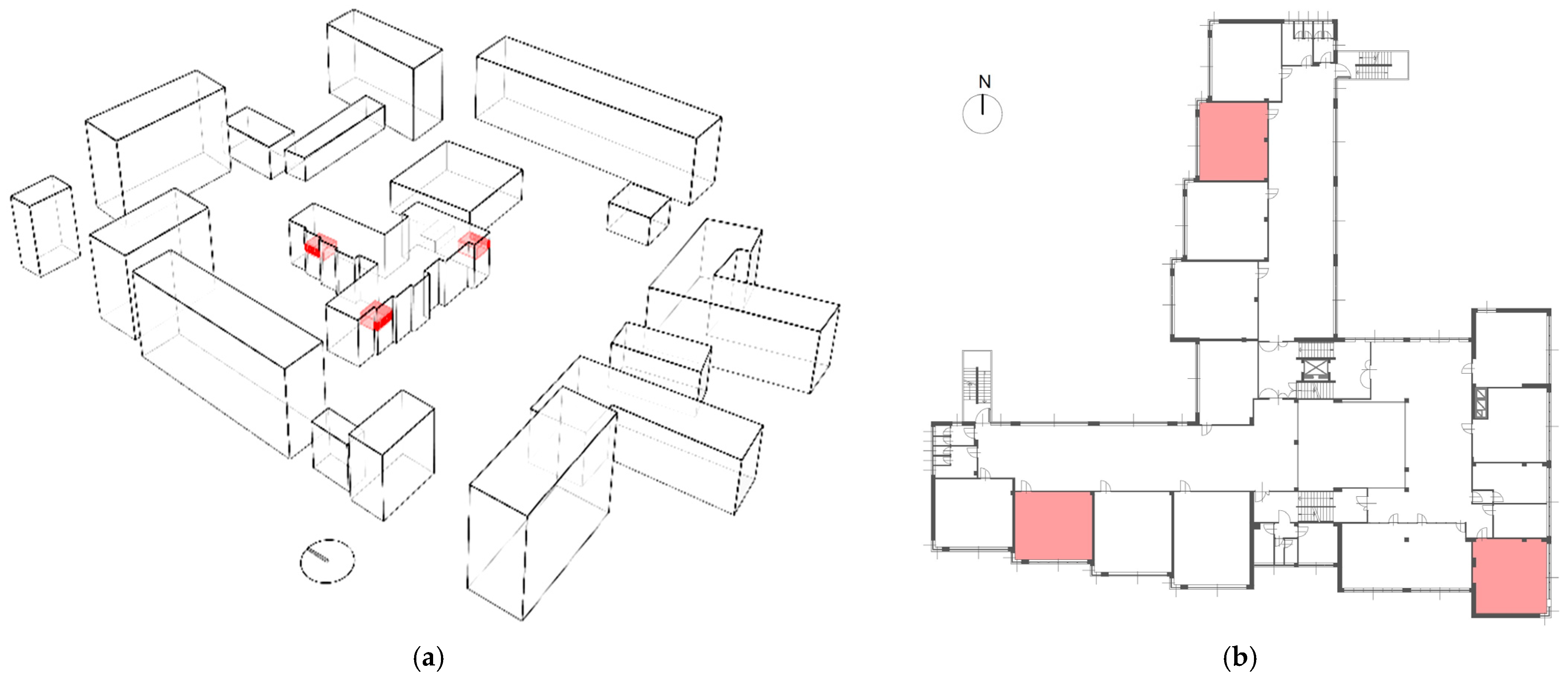



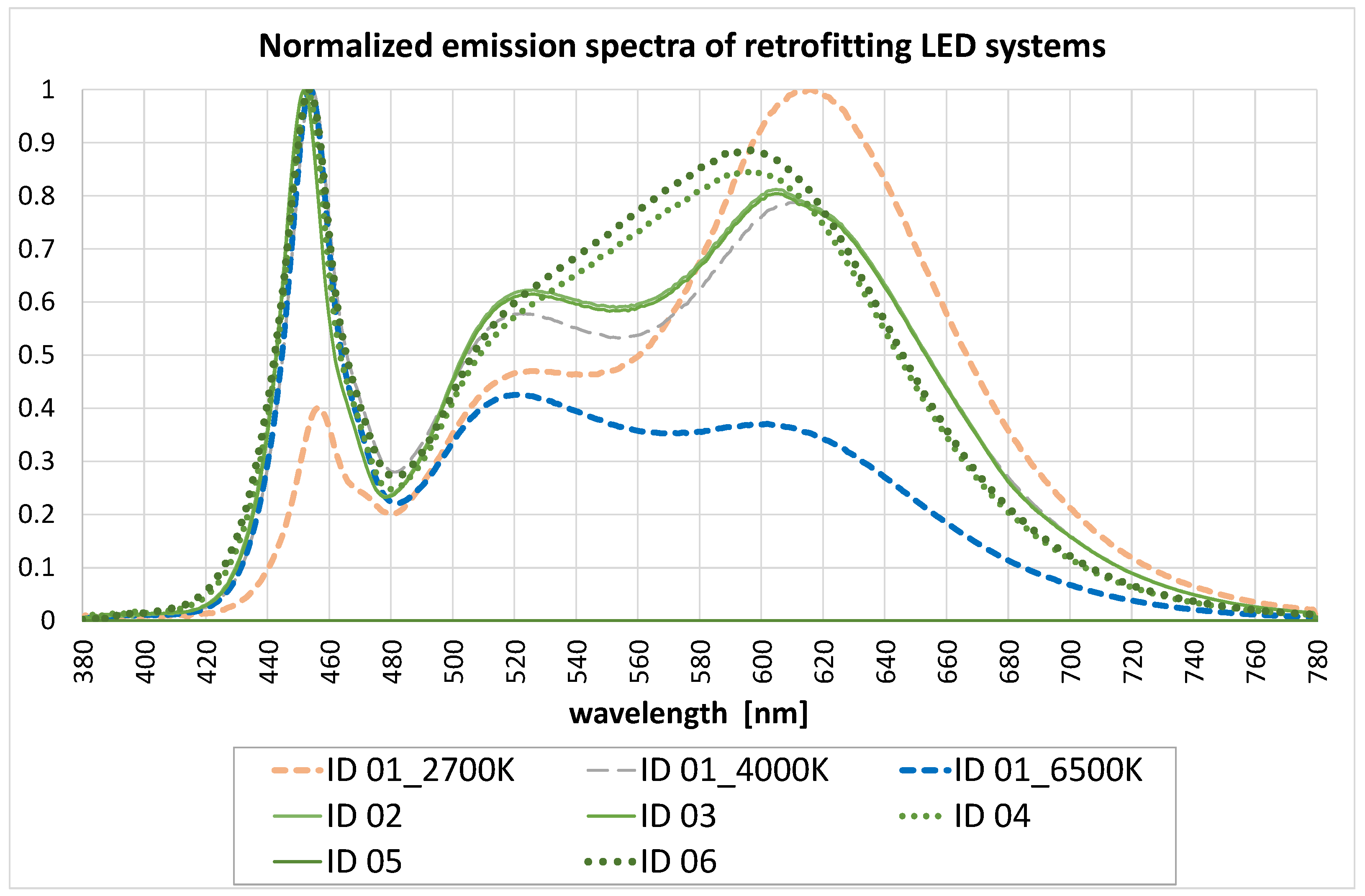
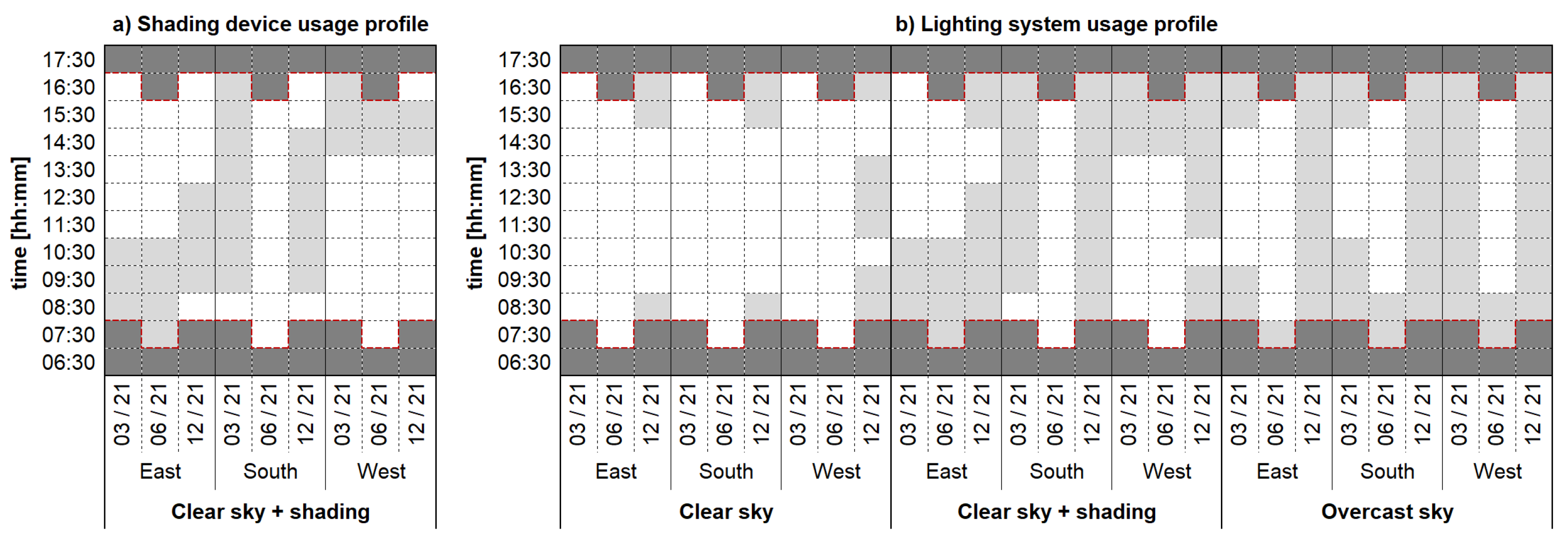


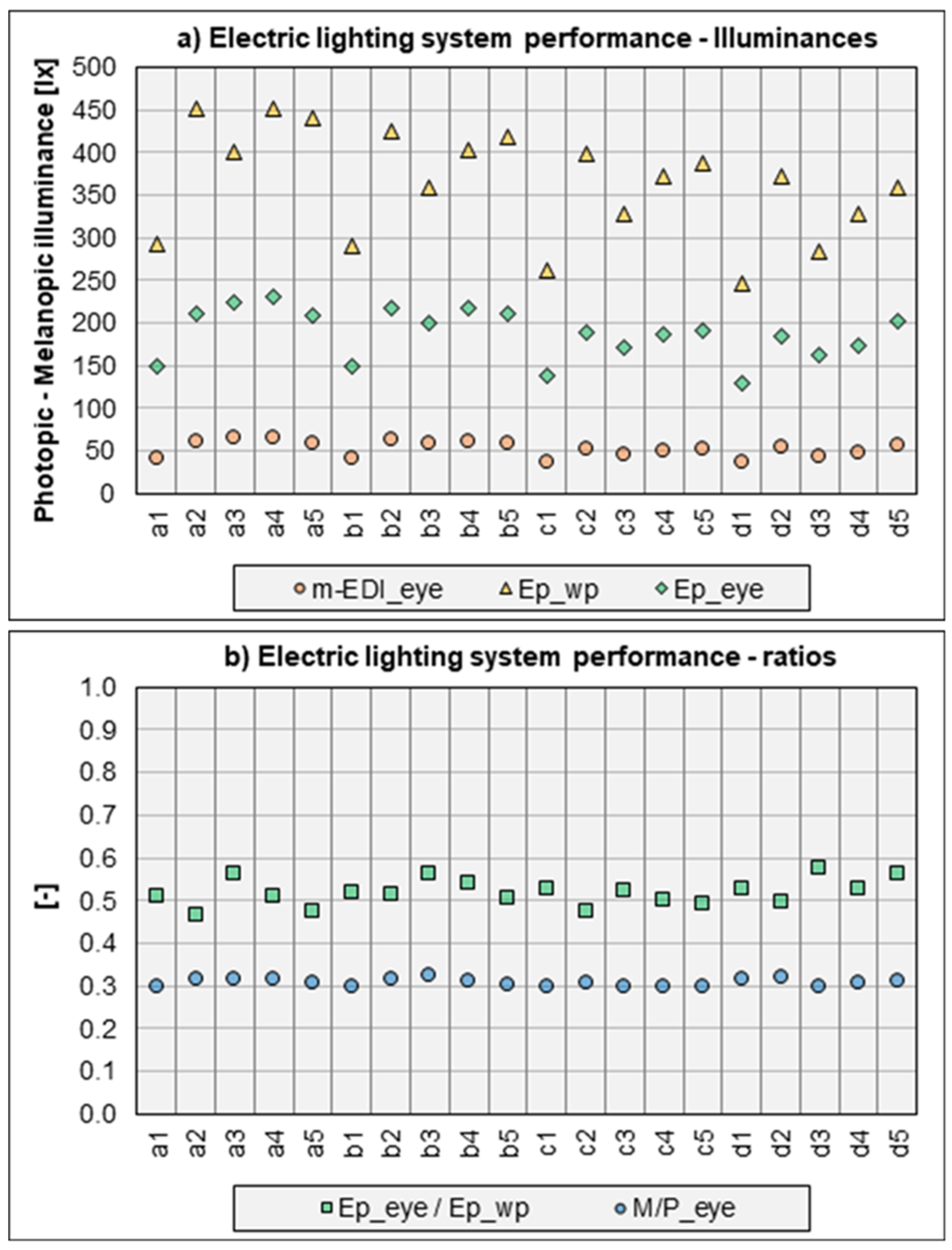
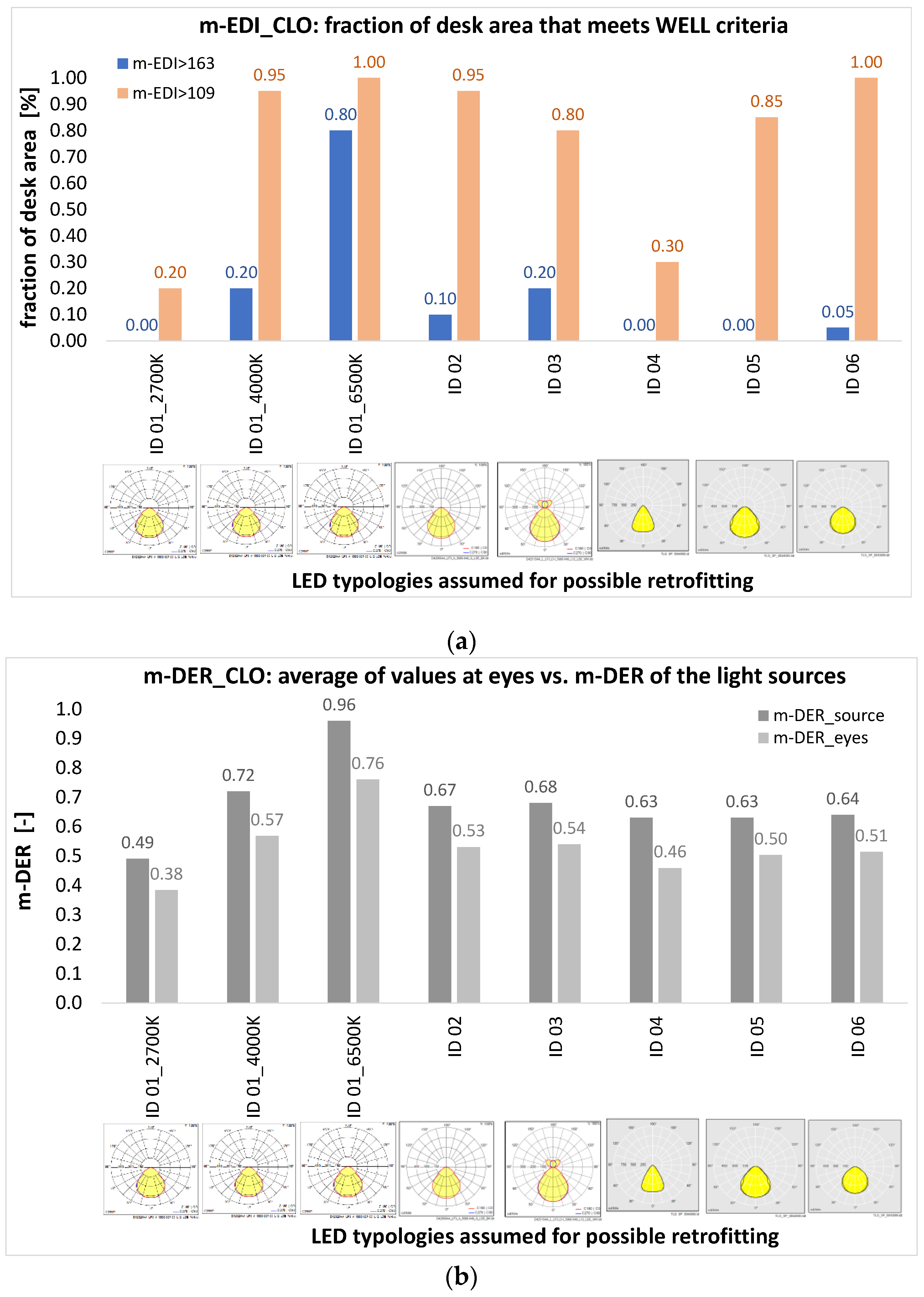
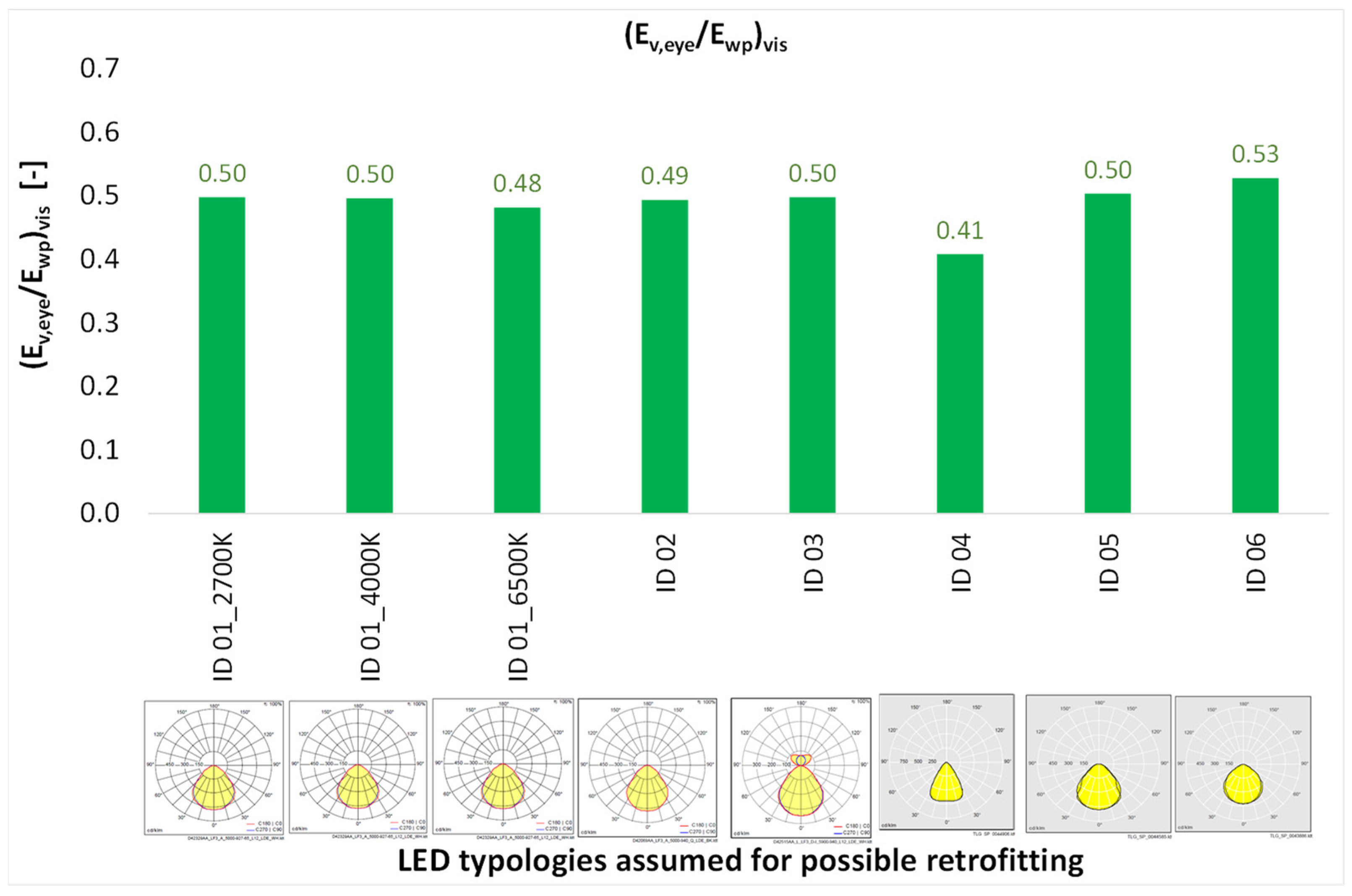

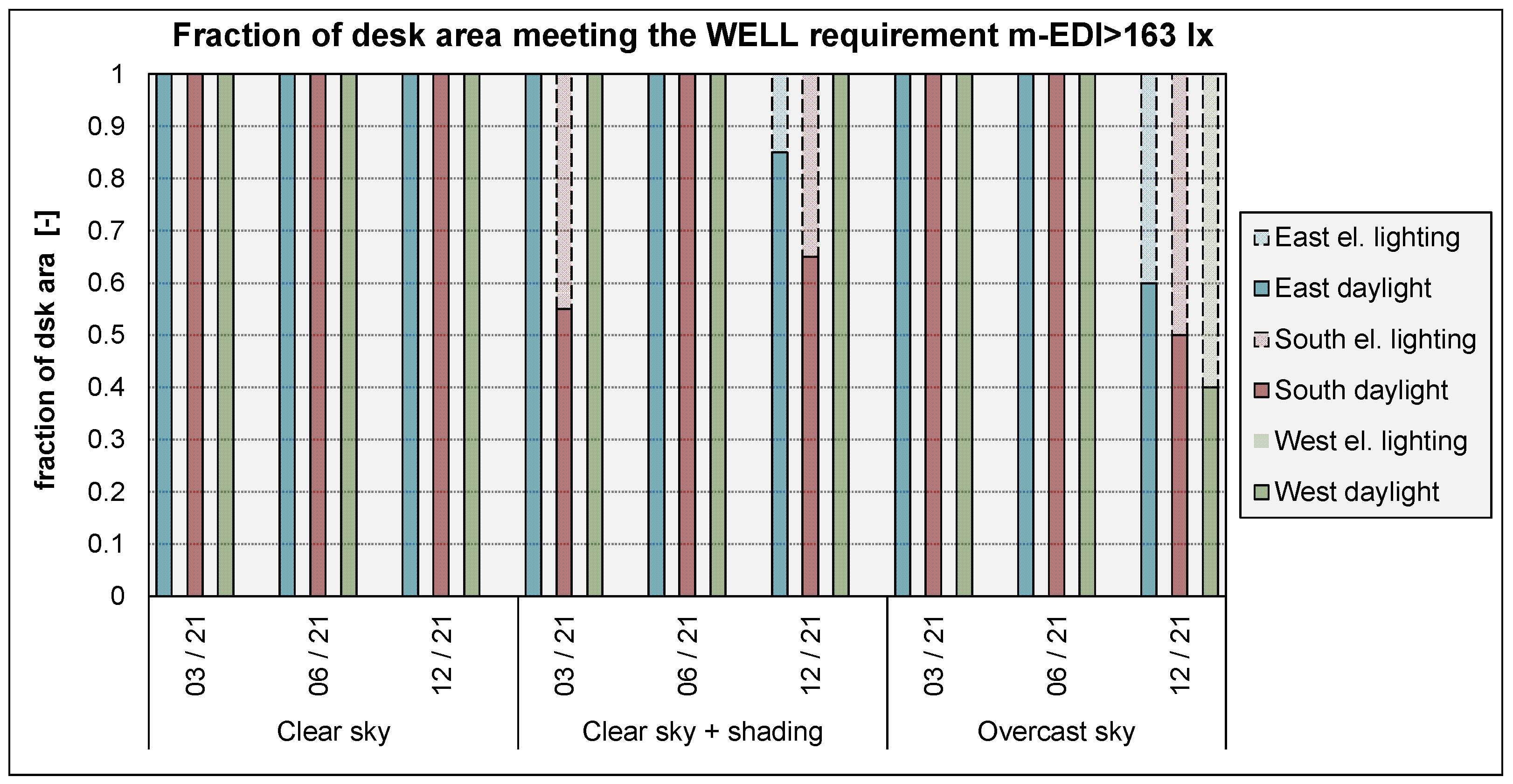
| 1 Point | 3 Points |
|---|---|
| at least 136 lux m-EDI; or at least 109 m-EDI 1 and 70% of all workstations are within 4.88 m of transparent envelope glazing. Visible light transmittance Tv ≥ 40%; or at least 109 m-EDI 1 and average sDA300,50% is achieved for >75% of regularly occupied floor area | at least 250 lux m-EDI; or at least 163 m-EDI 1 and 70% of all workstations are within 4.88 m of transparent envelope glazing. Visible light transmittance Tv ≥ 40%; or at least 163 m-EDI 1 and average sDA300,50% is achieved for >75% of regularly occupied floor area |
| ID 01 | ID 02 | ID 03 | ID 04 | ID 05 | ID 06 |
|---|---|---|---|---|---|
| ceiling-mounted tunable white (TW) | ceiling-mounted | suspended (2.70 m above the floor) | ceiling-mounted | ceiling-mounted | ceiling-mounted |
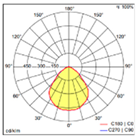 |  | 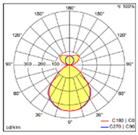 | 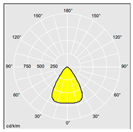 | 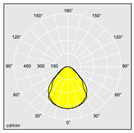 | 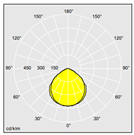 |
| Light output [lm] | |||||
| 5000 | 5000 | 5860 | 4300 | 4500 | 4250 |
| m-DER [-] | |||||
| 0.49 (2700 K) 0.72 (4000 K) 0.96 (6500 K) | 0.67 | 0.68 | 0.63 | 0.63 | 0.64 |
| Power [W] | |||||
| 59.7 | 47 | 52.4 | 35.6 | 32.2 | 40 |
| CRI [-] | |||||
| >90 | >90 | >90 | >80 | >80 | >80 |
| CCT [K] | |||||
| 2700–6500 | 4000 | 4000 | 4000 | 4000 | 4000 |
| Illuminance uniformity on workplane (average Em = 500 lx for all systems) | |||||
| 0.78 (2700 K) 0.78 (4000 K) 0.80 (6500 K) | 0.75 | 0.78 | 0.81 | 0.74 | 0.76 |
Disclaimer/Publisher’s Note: The statements, opinions and data contained in all publications are solely those of the individual author(s) and contributor(s) and not of MDPI and/or the editor(s). MDPI and/or the editor(s) disclaim responsibility for any injury to people or property resulting from any ideas, methods, instructions or products referred to in the content. |
© 2023 by the authors. Licensee MDPI, Basel, Switzerland. This article is an open access article distributed under the terms and conditions of the Creative Commons Attribution (CC BY) license (https://creativecommons.org/licenses/by/4.0/).
Share and Cite
Lo Verso, V.R.M.; Giovannini, L.; Valetti, L.; Pellegrino, A. Integrative Lighting in Classrooms: Preliminary Results from Simulations and Field Measurements. Buildings 2023, 13, 2128. https://doi.org/10.3390/buildings13092128
Lo Verso VRM, Giovannini L, Valetti L, Pellegrino A. Integrative Lighting in Classrooms: Preliminary Results from Simulations and Field Measurements. Buildings. 2023; 13(9):2128. https://doi.org/10.3390/buildings13092128
Chicago/Turabian StyleLo Verso, Valerio R. M., Luigi Giovannini, Lodovica Valetti, and Anna Pellegrino. 2023. "Integrative Lighting in Classrooms: Preliminary Results from Simulations and Field Measurements" Buildings 13, no. 9: 2128. https://doi.org/10.3390/buildings13092128





